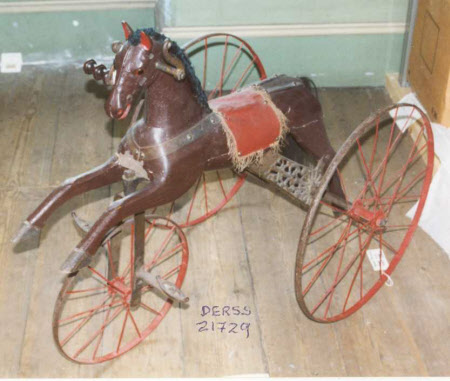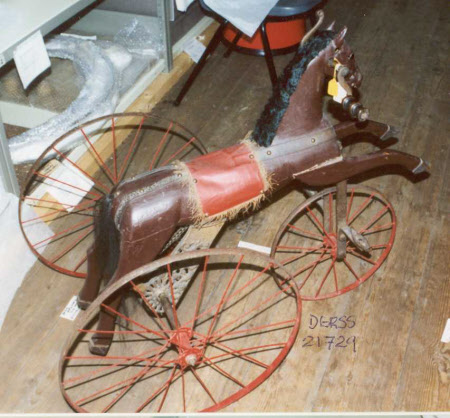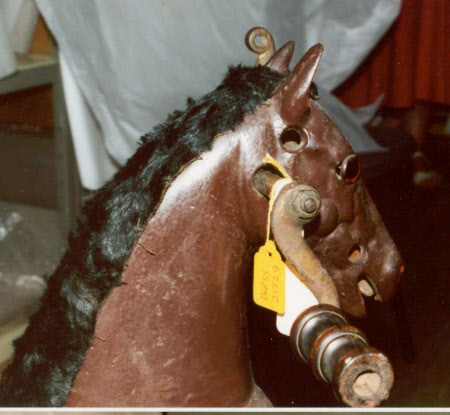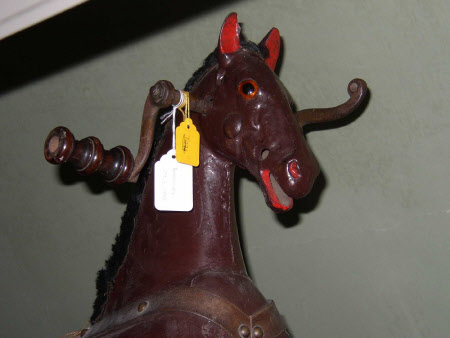Tricycle
Category
Carriages & other vehicles
Date
circa 1870 - circa 1890
Materials
Metal and wood, glass, textiles
Measurements
930 mm (length); 515 mm (width); 750 mm (height)
Place of origin
United States
Order this imageCollection
Sudbury Hall Museum of Childhood, Derbyshire
NT 660403
Summary
A child's 'Velocipede' or 'Le Cheval Mecanique' (mechanical horse) tricycle (circa 1870 to circa 1890). The documentation attributes this tricycle to the US. However, models of this type where the wheels were turned by the hands were more commonly made in France. French models were not called 'Velocipedes' but were simply called 'Le Cheval Mecanique' (mechanical horse). This horse tricycle was propelled by turning the handles on either side of the horse's head, whilst the feet turned the front wheel to alter direction. Although this tricycle has been dated as circa 1870 is could be nearer to 1890 as the tangential wheel spokes indicate a later date. The horse's head and neck are made from cast-iron and are two pieces of moulded metal joined down the centre of the face. The two parts of the head are also fastened by a nut and bolt. There are holes below the ears and above the mouth for harness fittings. The harness is missing but there is a small piece fastened in the forth hole. A metal pole is slotted through the head and is attached to the wood and metal handles, one on either side. One wood handle piece is missing. The handles are attached inside the body to a chain running from the axle of the back wheels. The horse has orange-brown glass eyes with black pupils and a black plush fabric mane (a replacement). The horse's body is made of wood and has outstretched front legs. The head and body are painted dark brown; the inside of the mouth, ears and nostrils are painted red. The horse has a red oil cloth saddle with a gold fringe and leather straps, forming a body harness nailed to its body. It has a black hair tail. A metal bracket attached to a red painted wheel is fastened underneath the front of the horse. On either side of the bracket are metal foot rests (two in total). Two decoratively moulded metal brackets are attached underneath the back of the horse, attaching the body to the axle of the two back wheels. The chain runs between the brackets and over a cog wheel on the axle. The two large metal rear wheels are also painted red. The horse tricycle was powered by turning the handles on either side of the horse's head, whilst the feet turned the front wheel to alter direction.





